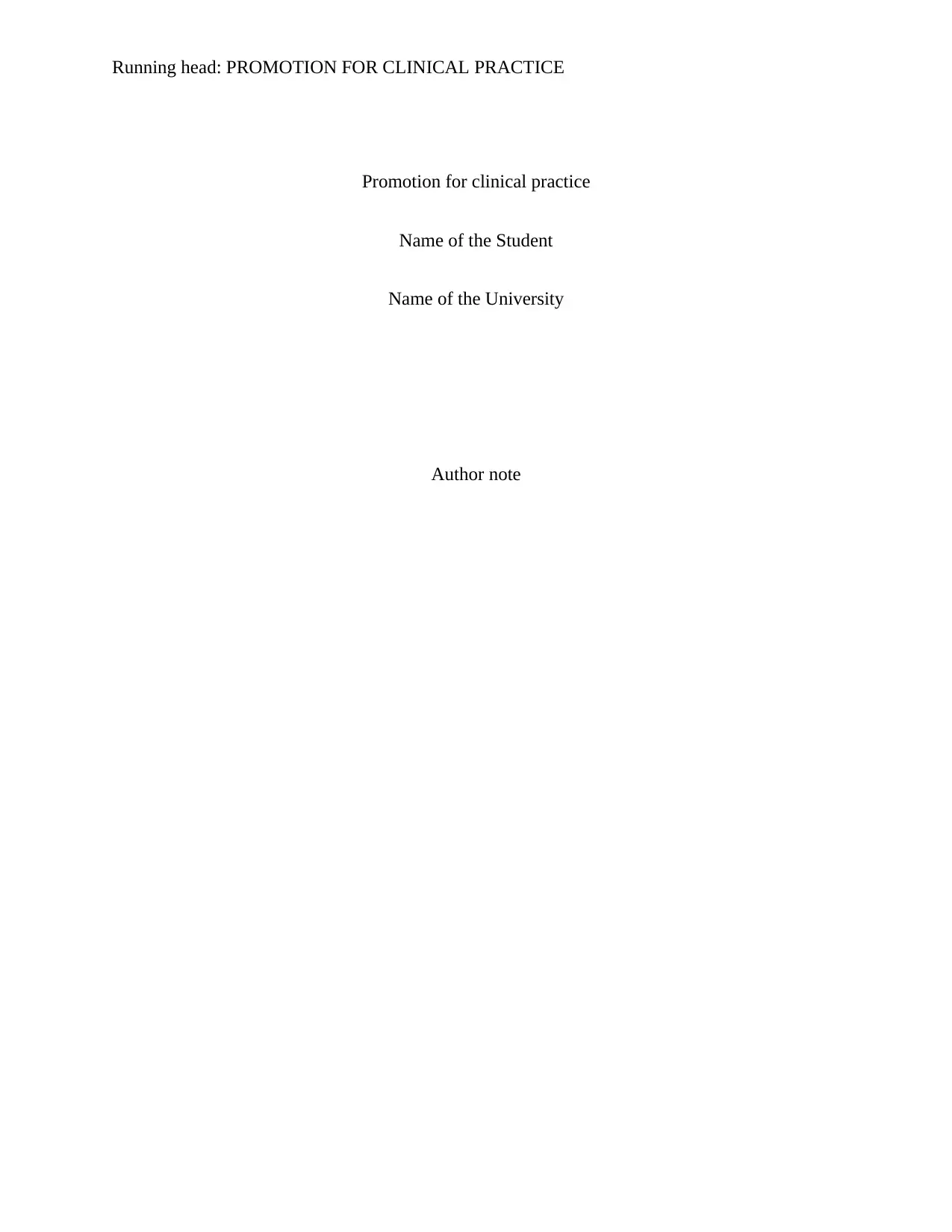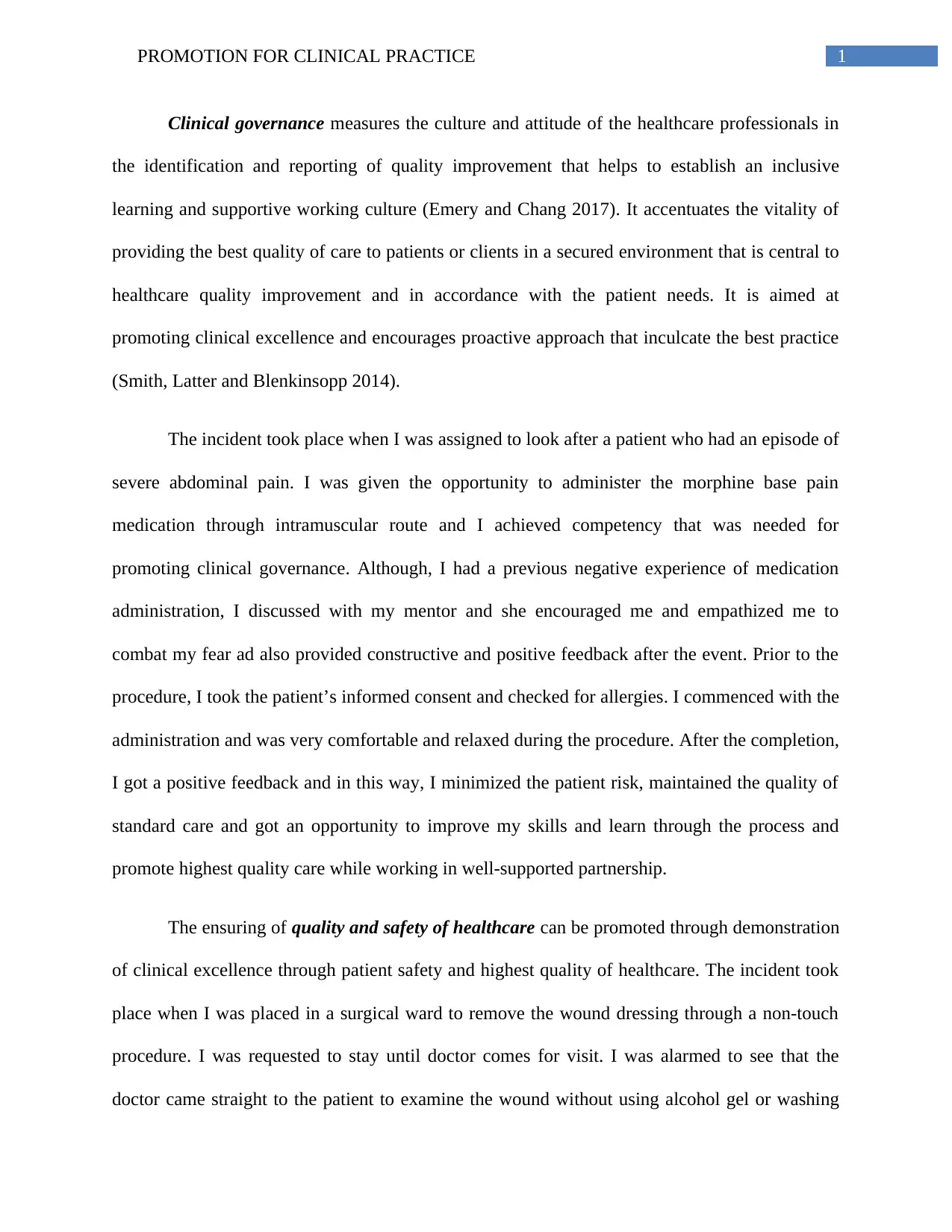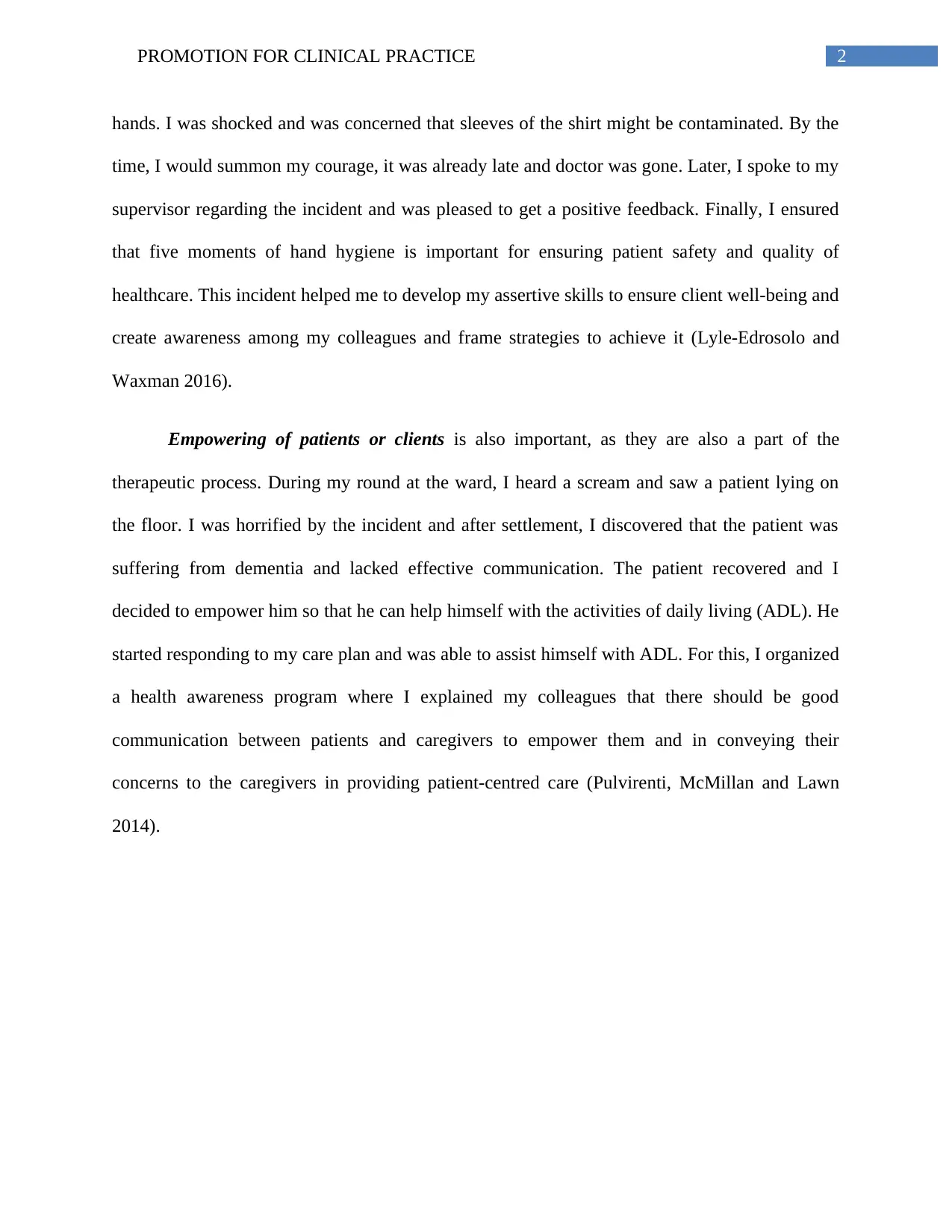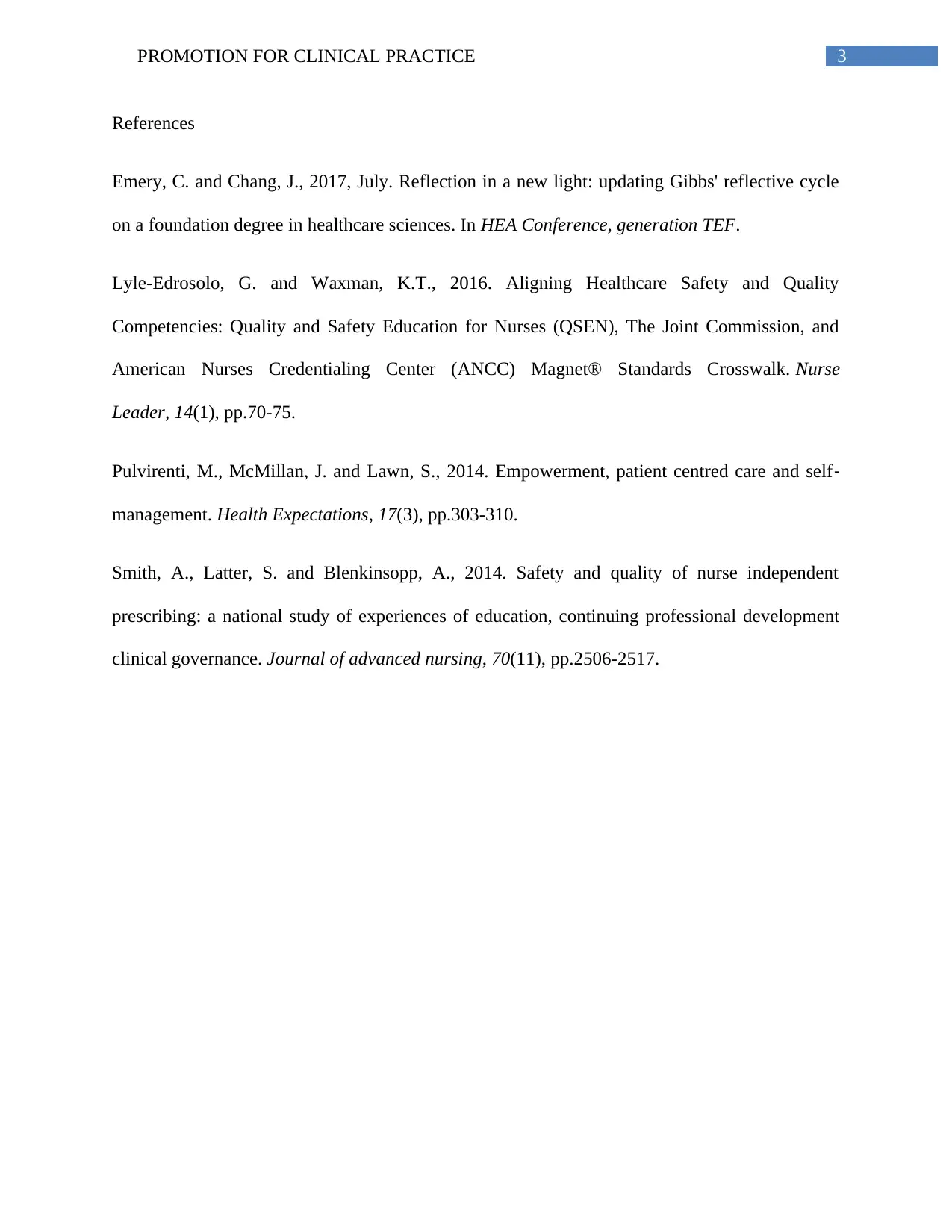University Healthcare: Promoting Clinical Practice Reflective Journal
VerifiedAdded on 2020/03/04
|4
|807
|39
Journal and Reflective Writing
AI Summary
This reflective journal explores critical incidents encountered in a clinical setting, focusing on promoting clinical governance, patient safety, and quality of care. The author details experiences with medication administration, highlighting the importance of informed consent, addressing personal fears, and the role of mentorship in skill development. The journal also examines incidents related to hand hygiene and patient empowerment, emphasizing the significance of assertive communication, creating awareness among colleagues, and strategies for empowering patients, particularly those with dementia. The author reflects on the importance of patient-centered care, good communication, and the development of health awareness programs. The journal references key literature that supports the concepts of clinical excellence, patient safety, and the promotion of quality healthcare standards within a supportive and learning-oriented environment.
1 out of 4











![[object Object]](/_next/static/media/star-bottom.7253800d.svg)